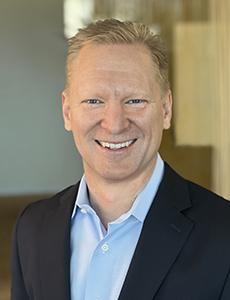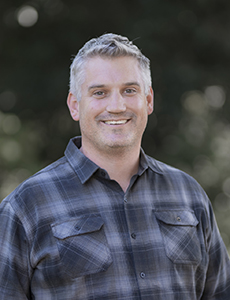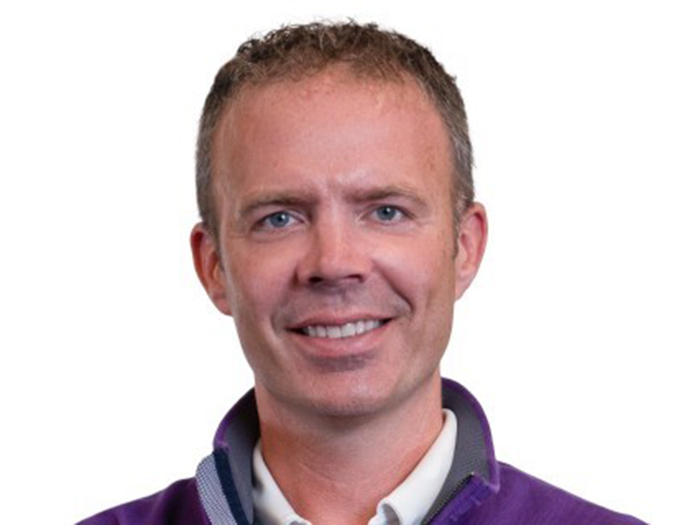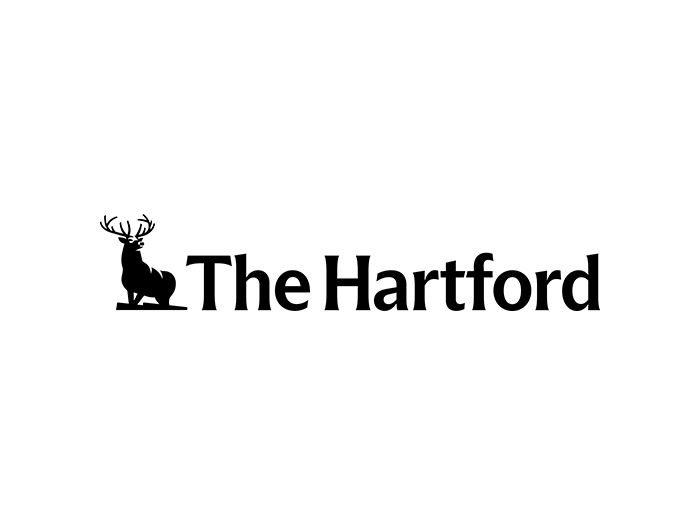Rethinking Wildfire Risk Management with CSAA’s Jeff Huebner and Blue Forest’s Zach Knight
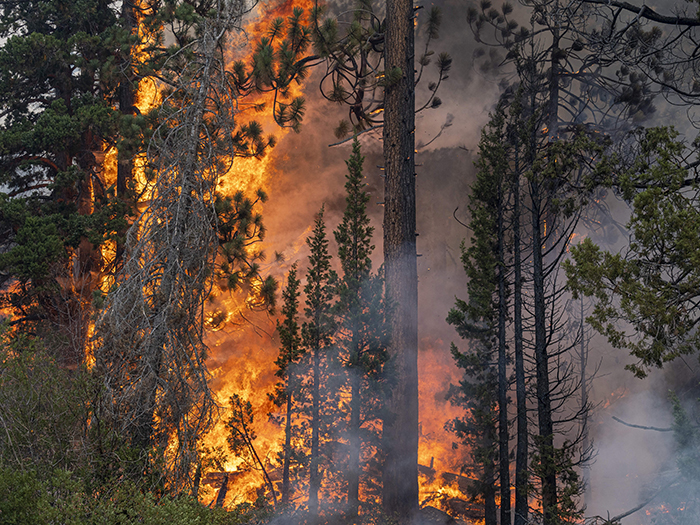
In a recent discussion, Risk & Insurance caught up with Jeff Huebner, the chief risk officer of CSAA, and Zach Knight, CEO of Blue Forest. They delved into topics such as CSAA’s proactive approach to wildfire prevention and the broader role the insurance industry could play in forestry management.
What follows is a transcript of that conversation, edited for length and clarity.
Risk & Insurance: What motivated CSAA to become involved with the California Wildfire Fund, and how did this collaboration with Blue Forest Conservation come about?
Jeff Huebner: As a AAA insurer, CSAA Insurance Group has been offering insurance to AAA members for over 100 years, with a significant portion of our business concentrated in Northern California. Given our 6 to 7% market share statewide in home and auto insurance, the devastating wildfires in 2017, 2018, and the Camp Fire in Paradise hit us hard, resulting in gross losses of approximately $3 billion over the years.
We recognized that the forests were facing challenges due to how they had been treated and managed over time. As an insurance company, we typically act as a financial first responder, assisting our member insureds and communities in rebuilding after an event. However, we wanted to explore ways to move upstream and prevent wildfires or reduce the severity of those that do occur.
In 2018, Zach and his team at Blue Forest introduced the concept of a Forest Resilience Bond. We participated in the first bond and were impressed with their work, leading us to participate in a follow-up bond with a larger investment. Seeing the potential for greater impact, we approached Zach with the idea of allocating $25 million to create what became known as the California Wildfire Innovation Fund.
R&I: What is the core problem that Blue Forest aims to address, and how does the Forest Resilience Bond help tackle this issue?
Zach Knight: Blue Forest is a conservation finance nonprofit focused on addressing the systemic issues surrounding ecological restoration on public and private lands, particularly in the Western United States. The core problem is the lack of local infrastructure, equipment and contractors to effectively manage the vast amounts of small-diameter trees and biomass generated from wildfire risk reduction efforts.
As a result, these materials often end up in large piles, like the 20,000-ton pile Jeff and I encountered, which are then burned due to the absence of alternative solutions. This not only wastes potentially useful biogenic carbon but also contributes to air pollution and greenhouse gas emissions.
To tackle this problem, we created the Forest Resilience Bond, a public-private partnership that brings together investors, foundations and beneficiaries to cover the up-front costs of ecological restoration projects. By identifying and quantifying the various co-benefits of these projects — such as reduced fire risk, improved water quality and quantity, avoided carbon emissions, and economic impacts — we can engage a diverse range of stakeholders, including water and electric utilities, corporates and flood control districts, to contribute their fair share towards these preventative measures.
The fund represents the next evolution of our work, aiming to make the entire system more efficient by creating value for the materials generated from these projects. By establishing a market for this biomass, we can generate revenue that can be reinvested into more restoration projects, creating a virtuous cycle that accelerates the pace and scale of our efforts to protect and restore our forests.
R&I: What is the overarching dilemma regarding forest management and sustainability?
ZK: The problematic forest management approach dates back about a century, when the Forest Service was a significant economic development engine for the Western United States. The timber from these forests built the railroads, mines and other infrastructure that attracted settlers to the region.
At some point, the agency’s mindset shifted to protecting taxpayer dollars, as they were part of the Department of Agriculture. They adopted a “grow and harvest” mentality and aimed to stop all fires. This exclusion of fire, which was both a natural occurrence and a cultural practice among Native nations in California since time immemorial, led to the departure from the interplay between people and fire that kept the forests healthy.
Consequently, we now face a man-made problem that requires a man-made solution. The lack of fire as a natural and cultural management tool has resulted in the current unsustainable and unhealthy state of our forests.
R&I: What role does the “firefighting industrial complex” play in addressing wildfires, and how does it compare to the investment in preventative measures like forest management?
JH: The “firefighting industrial complex” has received a tremendous amount of investment due to the highly visible and impactful nature of wildfires. Firefighting efforts, such as deploying airplanes and firefighters, are crucial during active wildfires.
However, as a society, we have been relatively underinvested in preventative measures. This is where our team has been focusing their efforts. Both California and the U.S. Forest Service have committed to mitigating 500,000 acres of forest per year, but they are not yet operating at that scale.
Our goal is to create value for raw materials, which can help fund more work and make it easier for California and the U.S. government to achieve their forest management commitments. By investing in sustainable forests, we aim to address the root causes of wildfires and reduce their impact.
R&I: What is the scope of the forestry that has been managed according to the standards you believe are necessary, and what percentage of the total forestry still needs to be managed better?
JH: We are very happy to be a part of this effort. However, we want to be candid that the amount of acres and funding we are helping with is a proverbial drop in the bucket relative to the overall need. It is a big issue, and we are only a small part of it.
By creating the California Wildfire Innovation Fund, we hope to be a catalyst for others to see that larger-scale investment can take place.
ZK: California has a unique makeup in its forests. Out of the approximately 33 million forested acres, about 20 million are U.S. Forest Service lands, accounting for 60% of the forested land base. The rest is mostly private land, with the state owning very little.
At Blue Forest, we help our federal and state partners achieve their targets rather than setting them ourselves. A target of treating 1 million acres a year is wonderful, and I would love to see us hit that target faster. When I started Blue Forest, the combined efforts of the state and the feds were likely less than 200,000 acres.
It’s important to note that to restore ecological function and reduce fire risk, not every acre of forest needs to be treated. Treating 20 to 30% of the land within a project area can provide 80 to 90% of the fire risk reduction benefits and water-related benefits.
The cost of treating 1 million acres annually ranges between $1.5 billion to $2.5 billion. To avoid continuously increasing prices, we must build system capacity, which is our focus at Blue Forest.
We work entirely on the preventative side, focusing on what we can do with the green material, especially the small-diameter trees known as ladder fuels, that come off these projects. Rightsizing our infrastructure to handle these materials is crucial.
It’s important to stress that fires start in the forests and then often move into nearby communities, impacting insurance companies like CSAA. We are working towards healthy forests not only for the ecological benefits but also because fires originate in the forests before spreading to communities.
R&I: What does the treatment cycle for preventing wildfires and promoting forest health involve?
ZK: The treatment cycle aims to create a more resilient and natural forest environment. This involves thinning small-diameter trees, using prescribed fires to reinvigorate the natural fire cycle and restoring meadows.
It also includes decommissioning old timber roads, which can cause significant water quality issues when they wash out during heavy rains following a big fire event. In areas that were burned 60 or 70 years ago and replanted with a single species, like lodgepole pine, the focus is on thinning out parts of the plantation to create heterogeneity.
The goal is to have different age classes, size classes, species and spacing within the forest. Many of these restoration activities involve cutting down trees, starting controlled fires and decommissioning roads to achieve the desired conditions for a healthier, more diverse forest that can better withstand future wildfires.
R&I: What role does fire play in the natural ecosystem, and how has fire prevention over the past century contributed to the current state of forests?
JH: Fire is a natural and essential part of the ecosystem. Certain trees, such as redwoods and sequoias, rely on fire for propagation. Their pine cones only release seeds when exposed to the high temperatures of a fire, signaling the optimal time for new growth.
However, starting about a century ago, there was a strong focus on fire prevention and suppression. While well-intentioned, this approach has led to the current circumstances we face today: forests that are overgrown and built up with fuel. The lack of regular, natural fires has disrupted the balance of the ecosystem.
R&I: What are your thoughts on the role of insurance companies in predicting and preventing wildfire losses, and how does it feel to be part of such an effort?
JH: As the chief risk officer, my role is to help prepare CSAA to support our AAA members during their times of greatest need. It’s wonderful to be part of an effort to predict and prevent these losses.
We exist as an insurance company to serve our AAA members, but it can be challenging given the catastrophic level of risk we face with wildfires. Our aim is to move the needle in a direction that improves the environment for the benefit of the people we serve.
We hope to lead a process where other insurance companies and industry participants join us in this endeavor. It feels great because rather than simply coming in after a fire to help people recover, we’d much prefer that the fire never reaches their community in the first place.
By strategically investing some of our surplus and assets, we believe we can have a multiple bottom line impact.
R&I: How do you view efforts like this climate resilience challenge as they relate to talent retention, especially for younger professionals entering the insurance industry?
JH: Social issues are important, and people want to work for a mission-driven company that has values and does things aligned with their interests and beliefs. We find that many employees are incredibly interested in what we’re doing here.
In addition to this challenge, we’ve funded other initiatives related to climate resilience and invested in research with universities to move the needle in that direction. These efforts are very popular with our current employees and give them an additional reason to feel proud to work for our company.
It also helps us with recruiting new talent. Last year, we received more applications for employment than ever before in the history of our company. It resonates with many people, and we think it’s part of being an attractive company that people want to work for.
R&I: What is the significance of the investment fund in creating a virtuous cycle and building a restoration economy?
ZK: Our investment fund aims to start a flywheel effect that will have a much greater impact than what Jeff and I, or the fund itself, can achieve individually. As a nonprofit, part of our mission is to build a marketplace and attract more investors to the table.
We need to demonstrate that creating beneficial uses for the material generates value that can be reinvested into these projects. This will specifically benefit communities in areas that have been left behind. We are putting forth community-scale solutions that the community will work at and support.
Investing in these communities is an alpha-generating strategy for us as investors. It will be easier to hire for jobs, and businesses will be able to operate more efficiently. This approach aligns with what our partners at the state and federal government want to see happen.
Simply growing the industry by bringing in groups from Idaho, Oregon and other states doesn’t solve the problem. We need to create incentives and build capacity that makes these projects less expensive and easier to implement. This, in turn, creates a flywheel effect for the restoration economy that we all want to see.
R&I: What steps is CSAA taking to mitigate wildfire risk at the individual home and community levels?
JH: Our efforts extend beyond just forest remediation to make forests healthier, which is a key part of the firefighting problem we referenced earlier. We are also very interested in mitigation at the home level, focusing on fortifying residences and communities.
To encourage this, we are working to provide discounts and education to our insureds. This empowers them to take the right steps to protect their homes. Additionally, we are collaborating with communities to help them implement appropriate measures to safeguard the community as a whole.
We don’t view our role as limited to working in the forest. While that is necessary to address future risk and hopefully prevent homes from burning down going forward, we recognize the importance of a comprehensive approach. Ultimately, our goal is to minimize the devastating impact of wildfires, which is an outcome that nobody wants to experience. &

